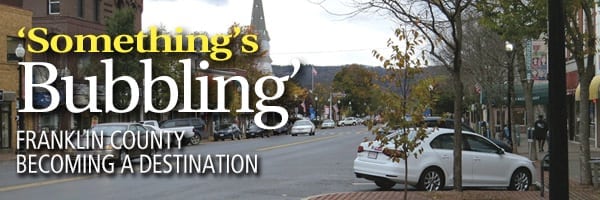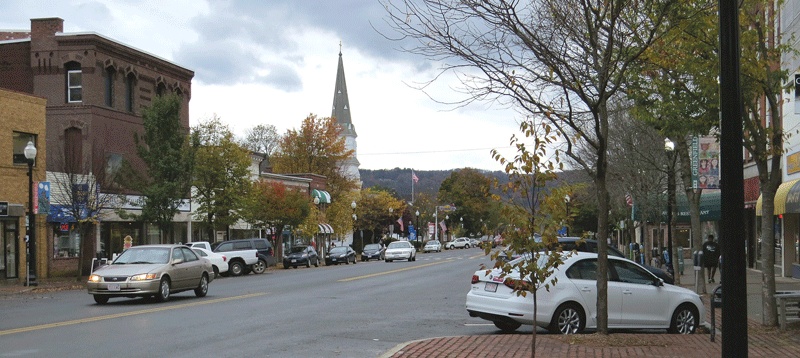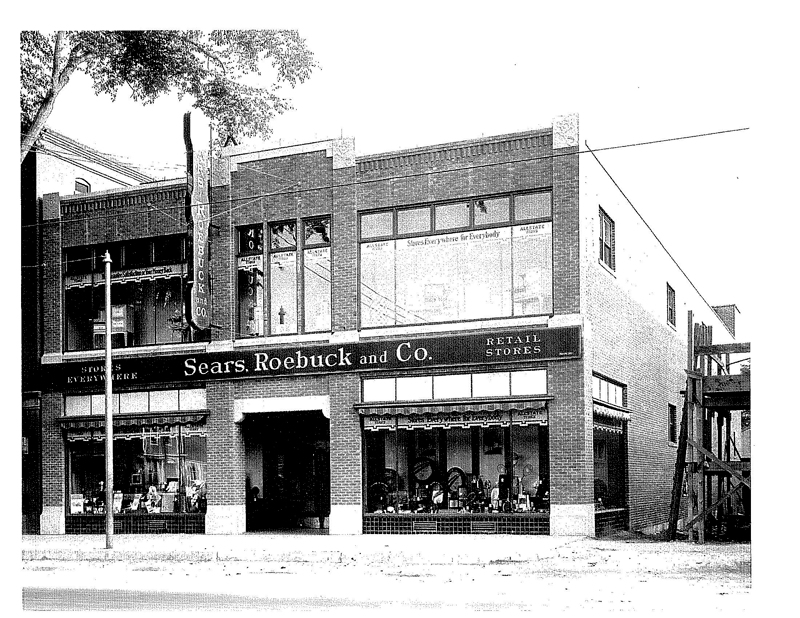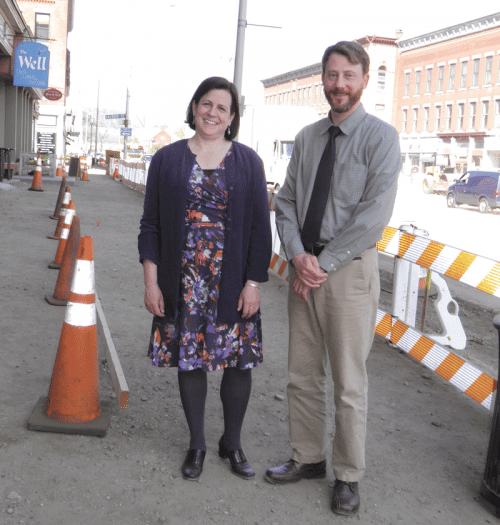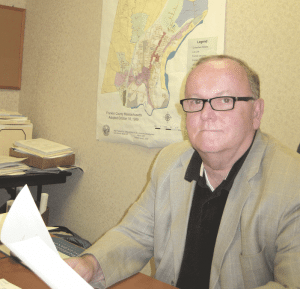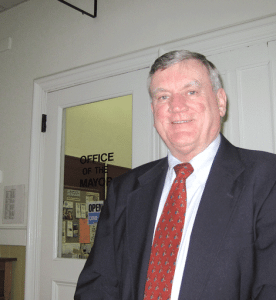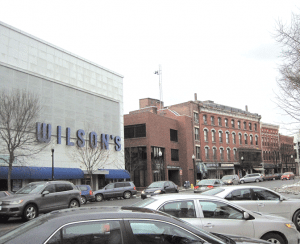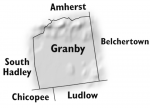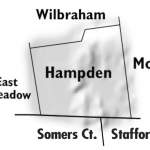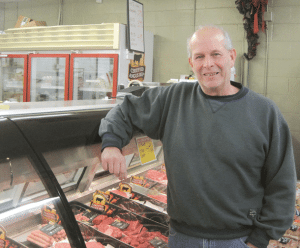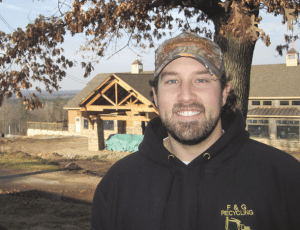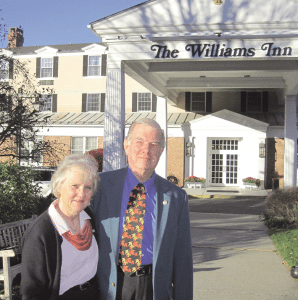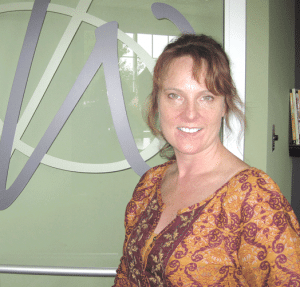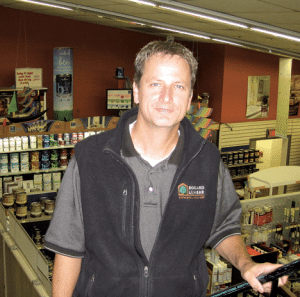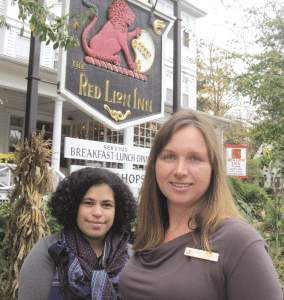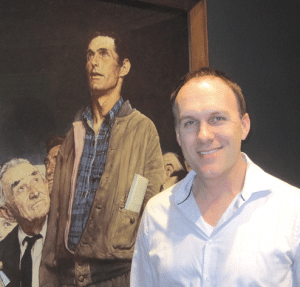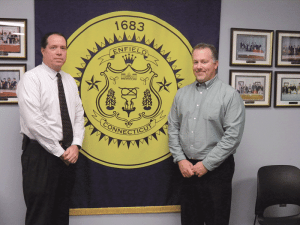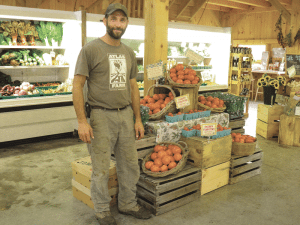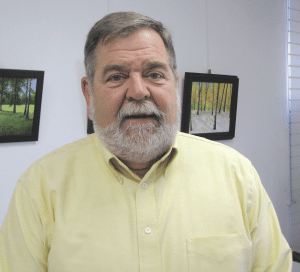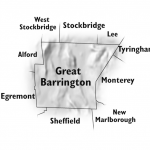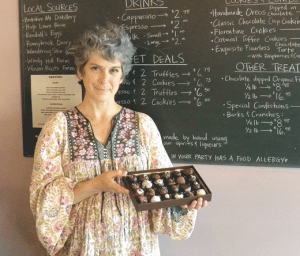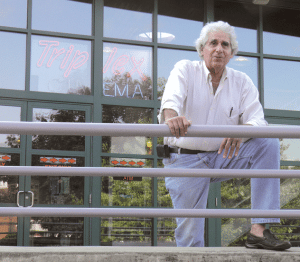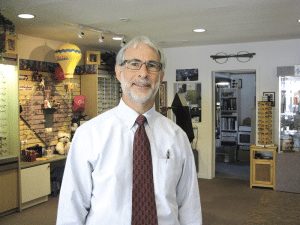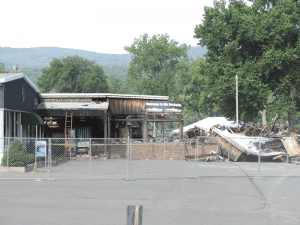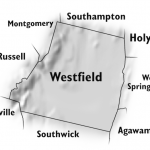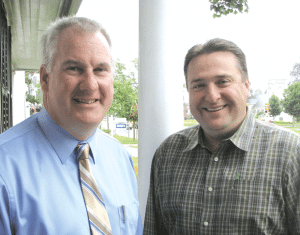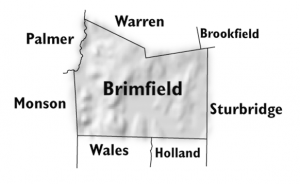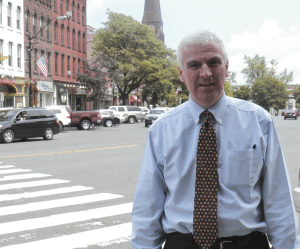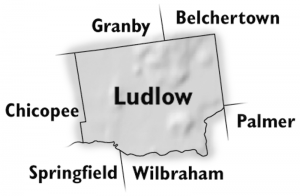‘Something’s Bubbling’
Franklin County, the state’s most rural county, and also its poorest, faces a host of challenges today — from a declining and aging population to poor broadband service in most of its communities, to statistically lower wages for comparable jobs. But those working to spur economic development and improve quality of life here see progress in many forms and vast opportunities to attract the young people who covet many of things this region can offer them.
John Lunt was looking to make a point about Franklin County in general, and the amount of developable land in and around Greenfield in particular, and to do so effectively, he recalled a recent conversation he had with Jay Ashe, the state’s secretary of Housing and Economic Development.
“We were talking about land that small precision manufacturers could potentially develop on, and he said something like, ‘you’re in Western Mass., Franklin County — you must have a ton of land,’” said Lunt, director of Special Projects and Economic Development in Greenfield, adding quickly that this is not the case at all.
“The land that we have available for those kinds of manufacturing jobs is pretty much gone,” he explained, referring especially to Greenfield. “We have some land that’s zoned ‘planned industrial,’ but there isn’t a business in the world that would build on it because of slope and ledge and things that make it to difficult to prepare.”

John Lunt says collaboration is a necessary quality in rural Franklin County, as is independence and an entrepreneurial approach to progress.
Lunt recalled his conversation with Ashe to make another point — that many of the perceptions about rural Franklin County, like the one about land to develop, are not exactly on the mark.
Others include the widely held belief that families and businesses do not want to locate there, the notion that the region doesn’t have much of what the Millennial generation is looking for, and the perception that manufacturing is all but dead in a region that had been economically dominated by it for centuries.
“Manufacturing is still doing very well here, but it’s changed somewhat; many large companies involved in traditional manufacturing have left,” said Patricia Crosby, executive director of the Franklin Hampshire Regional Employment Board. “Many smaller ones have stayed, and new companies have come here; they’re mostly involved in precision manufacturing or fabricated metals, and they’re doing extremely well, and they’re adding a few employees each year.”
Meanwhile, others we spoke with said Franklin County is, in fact, becoming a landing spot for Millennials — generally older Millennials who are ready to settle down, and especially those who are active and into outdoor sports (much more on that later).
Unfortunately, though, many other perceptions about this region are far more accurate, to the point where they become statistics. These include the fact that this is the poorest county in the state; that wages here are well below the state average for comparable jobs — a real factor in the region’s struggles to attract young people; that broadband service doesn’t exist in many of the communities in the county; that public transportation is sorely lacking; that the age of the population in those communities is rising at almost alarming levels; and that, while unemployment is fairly low at 3%, this is a misleading statistic because many individuals have stopped looking for work, and others are unemployable.
But while rural Franklin County has more than its fair share of challenges, there are a number of signs of progress and abundant hope that there will be many more in the months and years to come.
Start with the Five Eyed Fox, a restaurant and bar in Turners Falls that is making that community just east of Greenfield a destination and what some even called a ‘hot spot,’ a term not used in that community for some time.
“It’s super hip and cool to be in Turners Falls,” said Natalie Blais, executive director of the Franklin County Chamber of Commerce, and also the local tourism board. “It’s the place to be; Turners is sort of leading this whole retro, hip scene.”
It’s super hip and cool to be in Turners Falls. It’s the place to be; Turners is sort of leading this whole retro, hip scene.”
Then there’s the Orange Innovation Center, a co-working space in a community in what’s known as the North Quabbin area, the eastern edge of the county. Created in a factory where General Foods once produced Minute Tapioca pudding for roughly seven decades, the space now hosts an eclectic group of tenants ranging from a music studio and to a fitness club to the Center for Human Development.
And at Greenfield Community College (GCC), the only college in the county, a number of new programs have been created to help provide job seekers with the skills they’ll need to succeed in a changing, information-based economy.
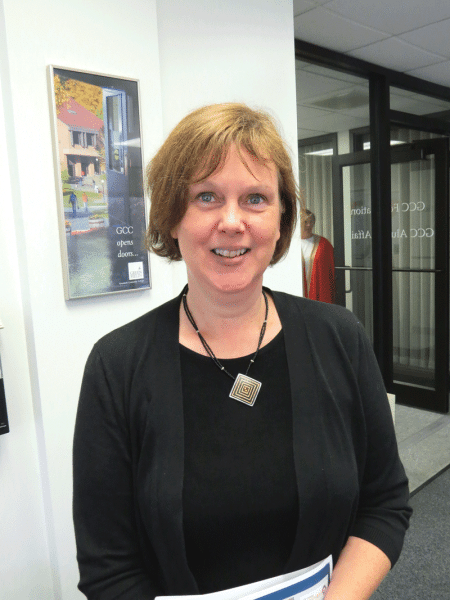
Linda Dunleavy says Franklin County is becoming an attractive landing spot for what she called ‘older Millennials,’ who are looking for a place to settle down.
Perhaps most importantly, though, an ecosystem is emerging. It’s comprised of a number of nonprofits, the college, government entities, and employers across several sectors, and while it’s still taking shape and finding its bearings, it is addressing the issues and problems facing the region through collaboration and efforts to maximize available resources. And it is also taking a more organized approach to the work of bringing families, businesses, young people, retirees — and opportunity — to the region.
For this issue, BusinessWest talked with several individuals who are part of this ecosystem about the various forms of progress being recorded — and the considerable work that remains.
Buy the Numbers
Collaboration is needed because the challenges facing Franklin County are numerous, and many of them are complex and defy easy answers — or any answers, for that matter.
Indeed, after talking about how wages in Franklin County are statistically lower than those in other areas and roughly 65% of what is paid statewide, Crosby, who noted that it’s been this way since she came to the REB 16 years ago, was asked the obvious question: why?
She paused for a moment and said simply, “because employers can get away with it.” And they can, because the factors that drive wages higher in other areas — a scarcity of workers and heightened competition for qualified talent — are not in evidence here, with some exceptions, as we’ll see.
That statistic regarding wages is only one of many eye-opening numbers that come to the forefront when talking about Franklin County. Many of the others drive home just how rural this area is: there are 72,000 people living in 26 communities across 725 square miles. In several communities, such as Rowe, Hawley, Heath, and others, stating the total population requires only three digits. In Monroe, one barely needs three; the latest census had 121 people living there.
The people living in those 26 towns are the poorest in the state in terms of per-capita income and, as noted, average wage per job, said Linda Dunleavy, executive director of the Franklin Region Council of Governments.
And, by and large, the population of the county is falling, said Alyce Stiles, dean of Workforce Development & Community Education at GCC. She said the enrollment at the county’s public schools is down significantly in recent years — which doesn’t bode well for the college or the region and its business community.
“That has layers of ramifications for us,” she said. “There are fewer people going into the community-college system, and then fewer people going into the workforce.”
And the population is getting older, said Roseann Martoccia, who should know. She’s the executive director of LifePath Inc., a nonprofit that works to help seniors age in place. She noted that 17% of the county’s residents are over age 65 (the state average is 15%), and in some of the smaller, western communities, the number exceeds 20%.
“And those percentages, in some communities, are expected to double by 2030,” she told BusinessWest. “And that’s not that far away.”
Behind all the numbers is a kind of operating mindset, if you will, one defined by a form of independence that is understandable when one considers how far away this county is from Boston or even Springfield — and not just in terms of geography.
“Collaboration comes from necessity,” said Lunt. “We have to be more independent, and we have to be more entrepreneurial, because whether we want it or not, most people realize that help isn’t really coming from farther east.”
The statistics, as well as this mindset, are just some of the things that Cindy Russo has learned she since became president of Baystate Franklin Medical Center in Greenfield, the county’s largest employer, roughly 18 months ago.
“I knew absolutely nothing about Franklin County before I came here, and about the only name I recognized was Yankee Candle,” she said, referring to the iconic Deerfield-based manufacturer and retailer. “Everything else, I had to learn.”
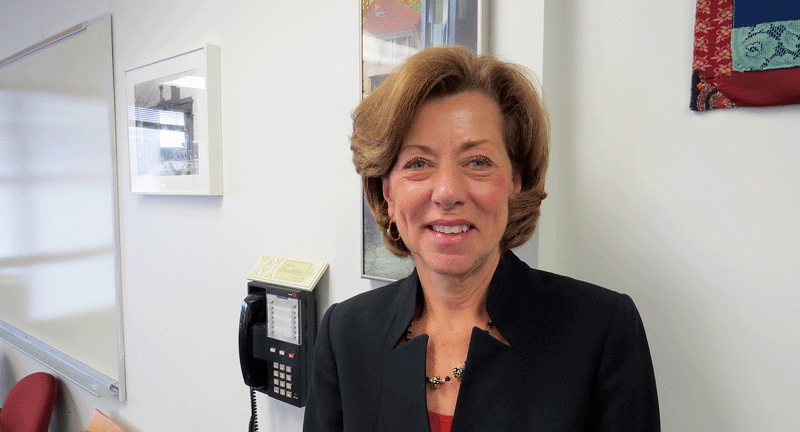
Cindy Russo, who became president of Baystate Franklin Medical Center in 2016, says she can sense gathering momentum in the region.
She’s learned, among other things, that the region has a strong sense of community spirit, as well as a great deal of natural beauty and a bounty of outdoor recreation to offer, from fishing to hiking; from skiing to whitewater rafting. She’s also learned that a large number of nonprofits operate in the region — often in collaboration with each other to meet a wide variety of missions.
She’s also come to recognize that it’s somewhat difficult to recruit doctors and other medical professionals to this rural area, despite its various amenities and lower lost of housing and living in general.
“That is certainly a challenge,” she said. “One of the biggest ways we’re able to attract people is if there’s a connection — they have family here or their roots are here — but also the beauty of this region and the hiking and other outdoor activity; those are strong selling points.”
Another challenge, meanwhile, is keeping young professionals, she said, adding that more than 50% of Baystate Franklin’s employees have less than five years of experience.
“Many times, we’ll get a new nurse from GCC, and they’ll start their practice at Baystate Franklin,” she explained. “But then they might be looking out for the sexier markets, like Boston. So we have to think of ways to keep them here.”
But since arriving, she’s observed something else — gathering momentum when it comes to the region being a destination for everything from a fun night out to a place to raise a family, to a spot where one can enjoy retirement. “There’s something bubbling here; even in the short time I’ve been here, I’m feeling it,” she said, adding that the region is becoming something it probably doesn’t want to become — a best-kept secret.
Land of Opportunity
There was some general agreement about that notion of something bubbling among those we spoke with. People talked about momentum and the region making strides toward becoming something it’s never really been, or hasn’t been for some time — a destination, on several levels.
Start with a night out — at the Five-Eyed Fox, or a growing number of alternatives.
“There’s great food and drink; there’s much more of a local arts scene than people than people think,” said Lunt. “We actually toured the Mass. Cultural Council around, and they were kind of blown away by what they saw out here.
“There are a lot of artists studios,” he went on. “There’s a lot of local theater, and Greenfield’s gone from having not that many restaurants to having 13 different kinds of cuisine. It’s not uncommon at all to do something you really couldn’t do here 10 or 15 years ago — families go out, have something to eat, and then go to a local show or theater or listen to some music.”
And then, there’s tourism in general. Blais said the region has built a solid infrastructure of attractions that includes ski resorts, ziplining and whitewater-rafting outfits, fishing, boating, and more, and needs to more aggressively promote what it has and build that important sector of the economy.
But those within this ecosystem also talked about destination in a bigger sense — as in a place for a family to settle or a business to put down roots.
And some younger families are moving into Greenfield and other communities, like Turners Falls, because of what they offer, said Blais.
“There’s lots of culture and live music,” she explained. “And with all the breweries and cideries in the region, we’re really seeing young people being interested in coming here.”
Dunleavy agreed, but narrowed the definition of ‘young’ somewhat. She said the region is more attractive to older young people, those with familes, those who might have roots in the region, or those who might have left in search of something else and now value what they left behind.
“It’s Millennials at a different stage of their life,” she said, adding that, despite recognized progress in this realm, there needs to be a large, concerted, and collaborative (there’s that word again) effort to sell the county as an attractive place to live.
“As a group of organizational leaders, we were talking about how we need to have the same mission — attracting young people and young families to Franklin County,” Dunleavy explained. “We should all identify how our organization will do that and work together to implement a region-wide strategy, because we need to bring more people to Franklin County and younger people to Franklin County.”
As for attracting businesses and jobs, the region faces a number of challenges, ranging from those broadband issues to the lack of developable land that Lunt mentioned.
“We never turn anyone away,” he said. “But we struggle when someone says, ‘we want a 40,000-square-foot building and 22 acres’ — we just don’t have that available.”
What is available are smaller lots, some old mill spaces, and office buildings downtown, he noted, adding that all of the above can be used toward something that Millennials, in general, seem to like: co-working space.
Several projects in this realm are already underway or in the planning stages, said Lunt, adding that they will helped by the town’s creation of a municipal broadband network that includes Internet, phone, and data services.
“The goal is to move people into these spaces by offering them more 21st-century infrastructure,” he explained, “because, as manufacturing-driven as we’ve been, we just can’t be in the future, because we just don’t have the space for it; we have to try to develop higher-tech businesses, and those are also businesses that pay well.”
Another challenge for the region involves the workforce. As noted earlier, unemployment is relatively low, but there are many who lack needed skills, have stopped searching for work, or are unemployable.
Stiles said the broad goal is to help individuals gain needed skills and fill positions in growing fields, such as healthcare and precision manufacturing.
She mentioned specific programs created at GGC for the precision-manufacturing and medical-assisting fields, just two of many where jobs exist and will exist in the years to come, and where companies consistently struggle to find good help.
Moving forward, she and others said the primary goal is to make the workforce larger and stronger, an initiative that is, in all ways, a work in progress.
Moving the Needle
Surveying the situation from many different angles, including that of a long-time resident and also someone working to stimulate economic development in the region, Lunt said the path Franklin County is on is the right one.
Elaborating, he said the many groups working to spur economic development and improve quality of life are moving the needle when it comes to generating progress and addressing the overriding challenge facing the county — creating enough good jobs to support the lifestyle that is the primary draw for this region.
“We could all live somewhere else, but we don’t — we choose not to,” Lunt told BusinessWest. Speaking for all those now part of the county’s emerging ecosystem, he said the broad goal is simply to inspire more people to take that same attitude.
George O’Brien can be reached at [email protected]



